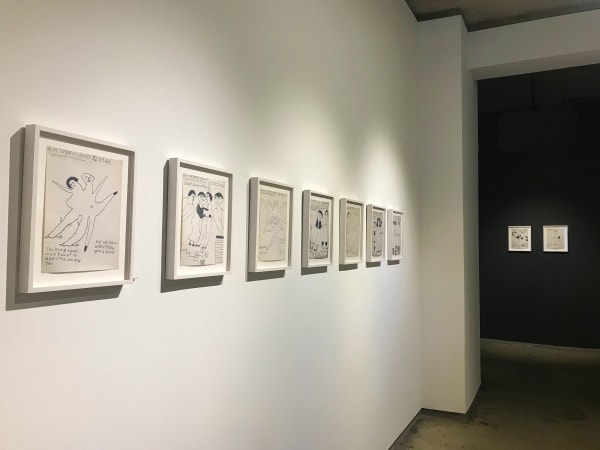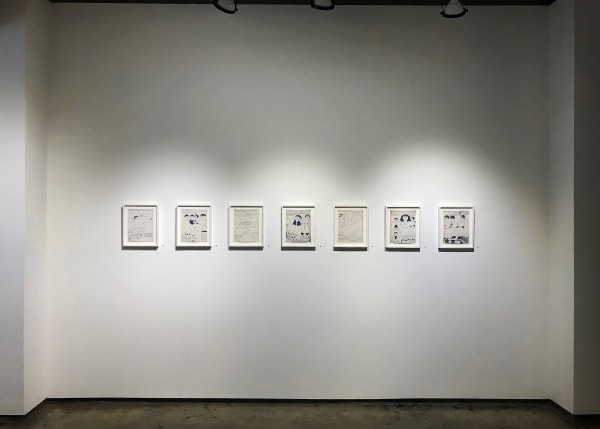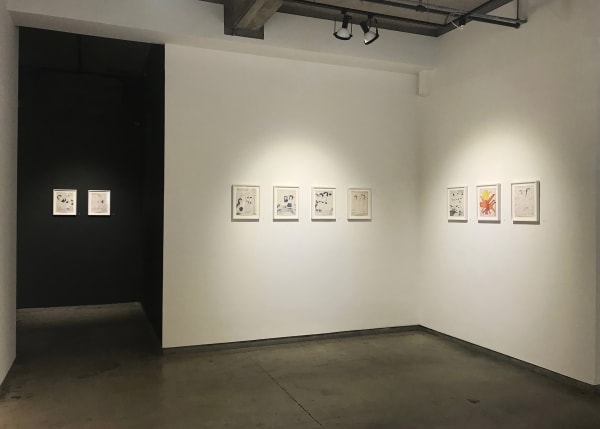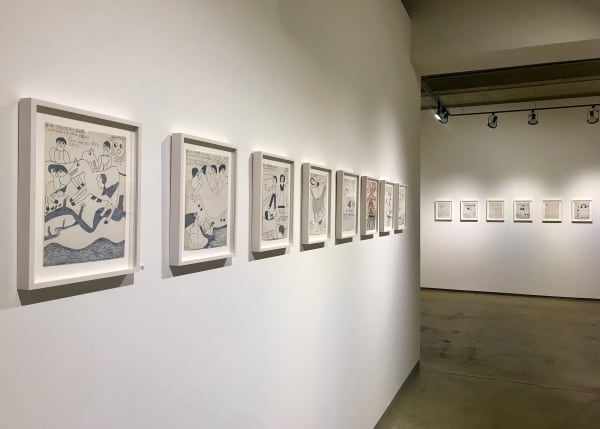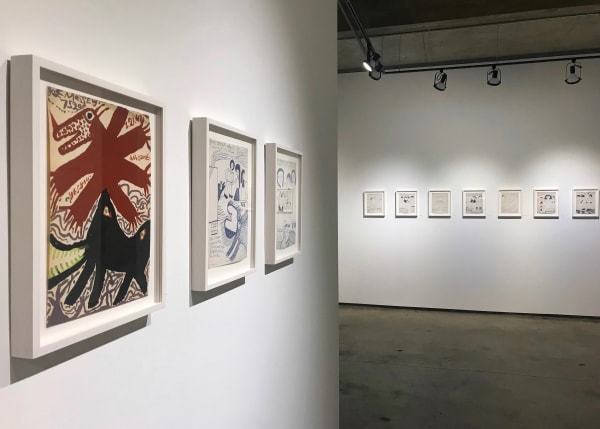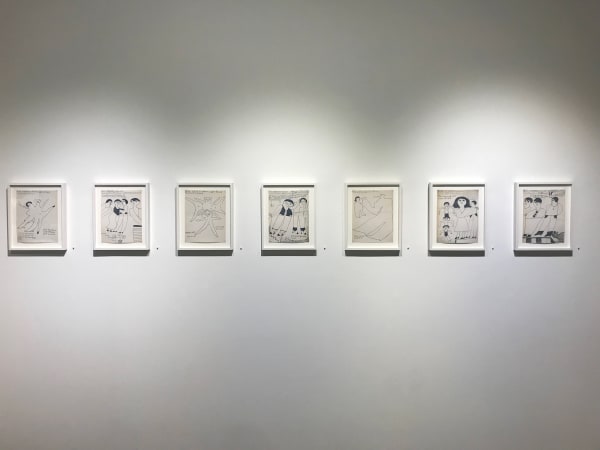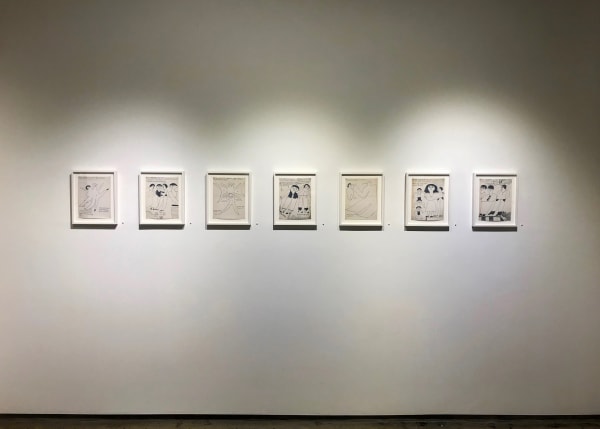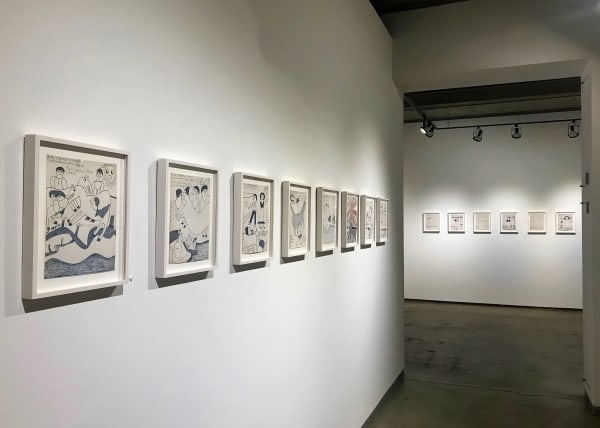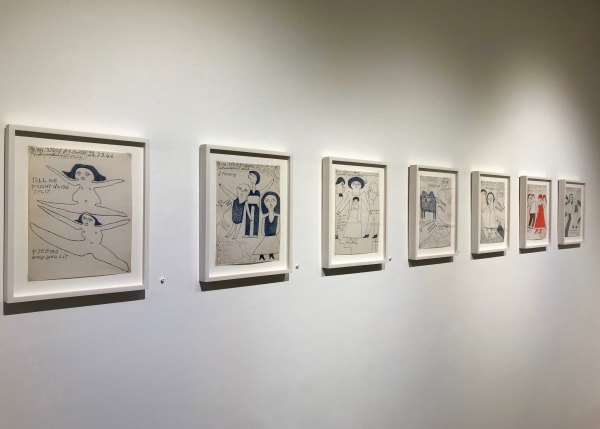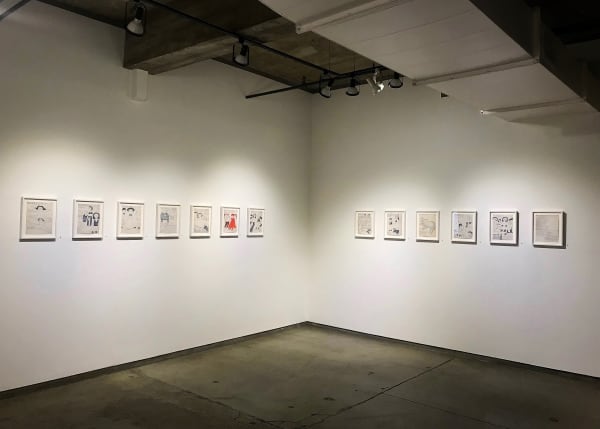Shut Up: Joe Massey's Messages From Prison
All that we currently know about the life of African American visual artist and poet Joseph Cyrus Massey are a few cold facts found in official documents, vintage newspaper clippings, and a handful of letters. According to his World War I draft registration form, he was born on August 9, 1895, in Texas. His entry in the Ohio Penitentiary Register of Prisoners, where he was admitted on March 7, 1939, indicates that he was previously incarcerated in Little Rock, Arkansas, Michigan City (under the pseudonym Lester Brown), and Jeffersonville—two Indiana towns.
The long-demolished Ohio Penitentiary in Columbus, where “Bugs” Moran, O. Henry, and Sam Sheppard also did time at different junctures—and where an astonishing number of capital punishments were carried out between 1885 and 1963—was the bleak outpost where Massey’s story rose above what was, by all accounts, a dejected life. Whether in the past he pursued artistic endeavors is unclear, but only a few years into his Ohio incarceration, the pioneering surrealist magazine View—whose contributors included Picasso, Duchamp, Nabokov, and Sartre—began printing inmate no. 75209’s drawings and poems.
At some point in the early 1940s, Massey started sending letters and submissions, addressed to Charles Henri Ford (“Editor Sr”), to the View headquarters at 1 East 53 Street in New York City. A sample of this correspondence is archived in The Beinecke Research Library at Yale University: some letters are written on blank pages and others on prison mail office forms, always in urgent, scribbled longhand and often embellished with sketches and stamped CENSORED. Massey fastidiously itemized drawings and poems that he had sent, received back (or not) as well as those that had apparently been mislaid—always finding an opportunity to convey his desire to publish a book (“or booklet or pamphlet”) of his poetry.
We know from the artist that Ford sent Massey issues of View, checks, and art supplies, but the absence of Ford’s written responses (most likely lost in the flux of prison administration) means that the full dynamics between Massey and Ford or the extent of the race-class divide in the roles of benefactor and protégé will forever be unknown. Whatever the case, Ford was surely intrigued and impressed with the radical otherness of Massey’s letters and creative output; they were windows to a world drastically unlike his own yet very much in tune with the spirit of the avant-garde.
The December 1943 issue of View included the following excerpt from Massey’s letters:
Sir in regards to the no. after my name This no. emphasises the fact that I have made a mistake in my life and I am trying to make the best of it I was charged with second degree murder. I am trying to overcome my past mistakes, And to rehabilitute myself by learning and writing. I am studying Christian Science.
I used to be a bell boy and a table waiter.
Now I am writing for a better day. Yours Respectfully
Joe Massey 75209
In April of 1918, the Little Rock Arkansas Gazette published the headline SHOOTS AT WIFE: KILLS A NEGRESS. Massey was sentenced to ten years in prison for killing the wrong woman, but he escaped a mere year later, found employment with the Works Progress Administration (WPA), which employed millions of unskilled blue-collar workers during the Great Depression and lived as a fugitive for almost two decades.
In December of 1938, outside the Mount Nebo Baptist Church in Toledo, Ohio, Massey shot and killed his second wife, Jessie Bates, and injured her male companion. Headlines of clippings from the Toledo Blade read, SHOOTING LAID TO JEALOUSY; WOMAN SHOT BY MATE DIES; MASSEY TRIAL NEARING JURY.
Massey escaped the electric chair but was sentenced to life and remained in the Ohio Penitentiary nearly sixteen years. He was transferred in 1954 to the Marion Corrections Institution, paroled in 1959, and finally released in 1965. In 1961 Greenwich Book Publishers in New York published a selection of his poetry in a book titled Singing Stars. To this date, it remains unknown what became of him as a free man or when he died.
Most of the works included in this exhibition and accompanying monograph are drawn in blue-black ink most likely using a rough-tipped dip pen—only four works are slightly larger and made in color temperas. Massey fluidly navigated between abstraction and figuration and choreographed each composition to shine within the constraints of a limited pictorial space, arranging his components with skillful rhythm and balance.
In his drawings the dark cloud of Massey’s past has lifted and the sun shines with a smirk. With an absolute economy of means he created a visual lexicon that speaks with vigor and whimsy; Massey presents surreal visions as matters of fact; his everyday vignettes cast a dreamlike glow. Multiheaded anthropomorphic figures with outstretched limbs and mythical beasts reminiscent of cave drawings gleefully float in negative space in some works. In others, a host of cartoonish human characters, their eyes peeled and mouths ajar, participate in various scenes, often surrounded by architectural and environmental props and a cheeky fauna (birds, canines, mules, horses, and indeterminate animals with protruding open snouts and teeth like needles).
The viewer is dropped into a kind of vaudeville that’s packed with action, motion, and emotion—and reinforced by Massey’s consistent use of words, sometimes a fragment of dialogue or a call and response between characters: “which way mister/after you sister,” “You keep out. Of this / did you call me miss,” “who me/yes you/telling me what to do.” Other times the voice of an indeterminate speaker who sounds somewhat like a proto-rapper: “They were on ice./once or twice,” “Two on. One. Mule./Arent no fool. But/ they dident. Go/to school,” “A human being. Aren’t been seen. Yet shall be the greates queen.”
***
Charles Henri Ford and his sister (the actress Ruth Ford) were born into well-to-do Mississippi family. Charles dropped out of high school and started publishing the monthly magazine Blues: A Magazine of New Rhythms, which had a short life, between 1929 and 1930. Openly gay, he was photographed as a handsome youth by Henri Cartier-Bresson, Carl Van Vechten, and Cecil Beaton— wearing a flamboyant costume designed by Dalí. He was a denizen among the intellectual circles of New York City and Paris, where he frequented Gertrude Stein and Alice B. Toklas’s salon. In 1940 he founded View in collaboration with film critic Parker Tyler. Published quarterly until 1947, the magazine drew content from the displaced European intelligentsia during World War II and introduced the avant-garde, particularly surrealism, to an American audience. After View folded, Ford went on to live a long, eccentric life as an artist, writer, and filmmaker—having reached into the trenches of unsolicited submissions to give an artist like Massey the possibility of transcending oblivion.
In a very real sense, Ford stands for the insurgence of the art world in the first half of the twentieth century and Massey for the marginalized artists that it made visible. Such unknown artists were fundamental to the ideals of modern art: self-expression unrestrained by the academic establishment; the democratization of art; seeing beauty in the unexpected; the artist as iconoclast. In this context, Massey was the epitome of crossover, not only because he established a line of communication with the nucleus of the art elite, but also because his imagery was experimental and autonomous— independent even from any conceptual or ideological framework. If his poetry was a vehicle to reformation, Massey’s drawings seem the distillation of his core experiences and world view—its truest expressions being caricature, hyperbole, and surrealism.
Massey’s life is a testimony of the unfathomable complexities of being human, but his art remains thrilling and irreducible—flourishing as much from seclusion as it did from exposure and a profound yearning to be heard. The manner in which he signed all his work (“J.M. 75209. P.O. Box 511. Columbus 15. Ohio”) mirrors this dichotomy: the convergence of Massey the person and Massey the prisoner in the genesis of the artist—he who creates and therefore exists.
ALEJANDRA RUSSI
